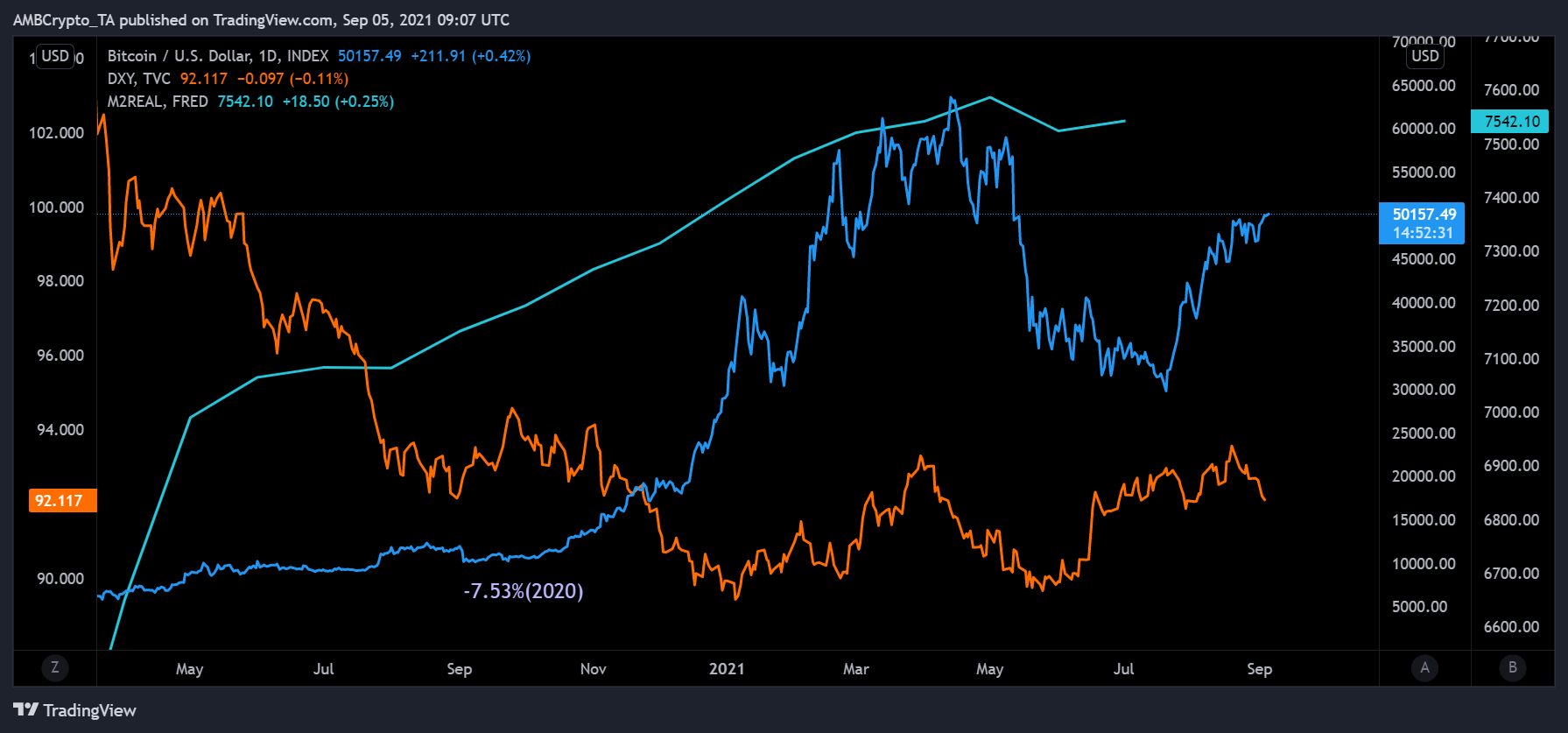What does the Bitcoin – M2 supply correlation mean, for the U.S. dollar?

Last Thursday, the U.S dollar surged ahead of a basket of currencies, after data suggested that producer prices had recorded their largest annual increase in more than 10 years. Inflation pressures remain strong in this context, and over time, the increasing interest in Bitcoin has led to many other discussions.
Many analysts have contemplated on Bitcoin’s characteristics to act as a hedge during inflation but its volatility factor usually acts as a counter-argument. In order to understand if there is co-dependence in this area, this article analyzes BTC’s movement with respect to M1 and M2 supply.
Is Bitcoin correlated with other non-liquid assets now?
Now, M1 and M2 indicate the monetary growth of the U.S dollar. M1 dictates the growth of liquid cash and coins in circulation in the market, whereas M2 is the broad combination of liquid and non-liquid assets. As M2 encompasses a wider range of assets, it is usually taken as an indicator of total money supply and future inflation.

BTC/USD on Trading View
Now, according to the chart above, it can be observed that the M2 supply and Bitcoins’ price movements have aligned over the past year, while the U.S dollar continued to have an inverse relationship with the digital asset. So right now, it can be inferred that Bitcoin adheres to the control on a wider list of digital assets than only cash.
While the correlation with M2 supply should be taken with a grain of salt, its importance increases if the Money Supply Growth is not under the control of the Federal Reserve.
How does inflation pressure factor in?
At the moment, the Feds would want the current inflation rate to be under 2-3% but it is sitting at 5.4%. The global economic landscape was completely disrupted during the initial period of the pandemic and presently, the government would want traditional investors to put their money in the greenback (U.S. dollar).
However, making a case for investment in the U.S dollar, when Bitcoin is tearing ahead in the market is difficult. A rising threat of inflation would only bring down the purchasing power of the U.S dollar, which is again a win-win situation for Bitcoin.
Whether Bitcoin can hold its own during a possible inflation period is difficult to state with any certainty, but a co-dependence with the M2 supply is certainly putting it in the driving seat.






